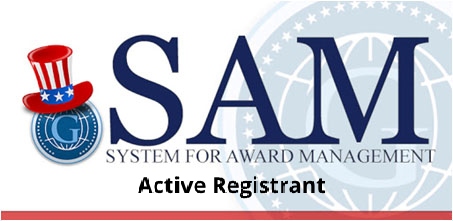Today’s business environment is defined by relentless uncertainty. Companies confront rapid technological shifts, geopolitical upheavals, and global health crises that can render elaborate five‐year plans obsolete within months. Traditional strategic planning—anchored in forecasts and rigid cycles—struggles to keep pace with sudden market pivots and emerging threats. Leaders need a new paradigm that treats strategy not as a static blueprint but as a dynamic, learning process. Lean strategy answers this call by replacing the annual planning event with a continuous experimentation, feedback, and adaptation cycle. Drawing on lean and agile principles, it empowers organizations to navigate volatility by embedding agility into their core strategic routines. This Leadership Brief explores why classic planning models are breaking down, outlines the principles of lean strategy making, and shows how mid to upper‐level leaders can apply this approach to seize opportunities and manage risks in real time.
The Limits of Traditional Planning
For decades, firms relied on multiyear strategic plans built around economic forecasts and fixed objectives. In more stable eras, such plans enabled companies to coordinate investments, align stakeholders, and measure progress against well‐defined milestones. However, a rigid plan can trap organizations in outdated assumptions when market conditions shift overnight, whether due to a sudden competitor, regulatory change, or global crisis. Some surveys (e.g., McKinsey, 2020) report that roughly 40–50% of executives felt their strategies lacked resilience after major disruptions, underscoring the limitations of fixed-cycle planning. Managers who cling to static roadmaps risk missing signs of change, delaying critical pivots until the next planning cycle. As one former planner lamented, these processes “flex old muscles on new issues” rather than fostering true adaptability. In an age where a competitor’s innovation or a pandemic lockdown can upend entire industries, treating strategy as a one‐off annual event is no longer viable.
Defining Lean Strategy Making
Lean strategy making borrows from lean manufacturing and agile product development to transform how companies design, test, and refine their strategic direction. Rather than viewing strategy as a monolithic deliverable, it becomes a set of disciplined routines that generate continual learning. Leaders establish a clear, long‐term ambition—their North Star—but navigate toward it through a series of smaller, evidence‐driven experiments. Each cycle comprises three intertwined activities: crafting hypotheses about market opportunities, conducting small‐scale tests to validate assumptions, and rapidly integrating lessons into the next planning iteration. The result is a living strategy that evolves in concert with changing realities rather than being locked in a binder.
Michael Mankins of Bain & Company illustrates this in his May 2025 HBR article “Lean Strategy Making.” He argues that standardizing the strategic rhythm—much like Toyota’s approaches to manufacturing—can reduce wasted effort, sharpen decision quality, and accelerate adaptation. Organizations ensure that strategic discussions are focused, transparent, and aligned from the C‐suite to operational teams by instituting a regular cadence of strategy sprints and deploying standard evaluation tools. Importantly, lean strategy does not forsake long‐term vision; it balances a steadfast sense of purpose with the flexibility to alter tactics based on real‐time feedback.
Core Principles of Lean Strategy Making
At the heart of lean strategy making lie three core principles that distinguish it from conventional planning:
Iterative Planning as a Continuous Dialogue
In place of a solitary annual retreat, strategy unfolds through recurring shorter cycles—quarterly or even monthly—where leaders review progress, reassess assumptions, and adjust priorities. Each cycle starts with a clear set of strategic questions or hypotheses. Teams then define the experiments to test these hypotheses over the next interval. At the review, leaders examine both quantitative metrics and qualitative insights, probing whether the environment has shifted or if initial assumptions still hold. This ongoing dialogue ensures that strategy remains current, enabling faster course corrections. Over time, accumulating minor adjustments leads to a robust, responsive strategy that can thrive amid turbulence.
Small‐Batch Experimentation to Validate Assumptions
Rather than committing to large, untested initiatives, lean strategy-making advocates for piloting ideas in contained environments. A company might trial a new distribution channel in one region, explore a fresh pricing model with a select customer segment, or test a partner collaboration on a limited scope. These small‐batch experiments serve as probes into the future, generating early indicators of viability. If an experiment underperforms, leaders swiftly terminate or recalibrate it, minimizing waste. When tests succeed, the organization scales the initiative more broadly. This approach mirrors the “build‐measure‐learn” cycle of the Lean Startup methodology, converting strategic hypotheses into validated learnings before larger investments are made.
Fast Feedback Loops and Organizational Learning
Lean strategy embeds rapid feedback loops that capture lessons from successes and setbacks. Unlike annual reviews that come too late, these loops can be weekly or monthly, drawing on leading indicators—customer feedback, emerging competitive moves, or shifts in regulatory landscapes—to inform strategy adjustments. Leaders cultivate a culture where deviations from expected outcomes spark inquiry, not blame. By systematically harvesting insights from execution and the external environment, organizations turn volatility into a strategic asset: every surprise becomes an opportunity to learn. Practices like Toyota’s Plan‐Do‐Check‐Act (PDCA) cycle for strategic deployment (hoshin kanri) exemplify how structured learning routines can institutionalize continuous improvement in strategy.
Driving Strategic Agility
The ultimate aim of lean strategy is to instill agility at the strategic level, enabling organizations to respond swiftly when circumstances change. Several mechanisms reinforce this agility:
Shortening the Sensing‐to‐Response Time
Because strategy is reviewed frequently, companies can detect inflection points—such as a competitor’s product launch or a sudden supply‐chain disruption—and adjust within weeks. Traditional planners, locked into annual schedules, often lack this nimbleness, waiting months to revisit assumptions. Lean strategy making empowers cross‐functional teams to convene ad hoc strategy sessions, prioritize the strategic backlog, and reallocate resources rapidly, ensuring critical pivots occur before damage accrues.
Maintaining a Dynamic Strategy Backlog
Instead of a static list of long‐term objectives, lean strategists manage a living backlog of strategic initiatives ranked by potential impact and feasibility. New ideas and emerging risks are added in real time, while lower‐priority items are deferred or removed. This backlog functions like a product backlog in agile development, providing visibility into strategic options and facilitating transparent prioritization. Senior leaders periodically reprioritize the backlog based on the latest feedback, focusing on the most valuable opportunities.
Embedding Change Disciplines without Chaos
Although lean strategy making permits frequent pivots, it also enforces disciplined decision protocols. Standardized templates for proposing, evaluating, and approving strategic experiments ensure that changes happen in a coordinated fashion. Clear governance structures define roles and accountabilities, so that agility does not devolve into aimless reactivity. Everyone understands the process for surfacing strategic insights, testing new approaches, and scaling proven ideas. This combination of flexibility and structure fosters organizational resilience— the capacity to absorb shocks, adapt, and emerge stronger.
Real-World Applications
Leading organizations across industries have begun adopting lean strategy practices with notable success:
For example, one global consumer-goods firm that was studied moved from an annual planning retreat to quarterly ‘strategy sprints’ and saw faster validation of new direct-to-consumer pilots.
Industrial manufacturers have been observed using small-batch analytics pilots on select production lines, then scaling successful tests to a broader scope.
Leading retailers have built digital ‘backlogs’—living lists of omnichannel initiatives—that they reprioritize based on real-time customer data, enabling agile investment shifts during peak periods.
These examples demonstrate how treating strategy as a living process can unlock a competitive advantage. Organizations that learn faster and adapt sooner can capture emerging growth opportunities, mitigate risks, and align resources where they matter most.
Conclusion
Strategy must evolve from a static artifact into a dynamic learning engine in an era where market conditions can shift overnight. Lean strategy making equips mid to upper‐level leaders with a robust framework for continuous adaptation: iterative planning cycles, small‐batch experiments, and rapid feedback loops embed agility into strategic decision-making. This approach balances a clear, long-term vision with the flexibility to pivot as contexts change, ensuring that organizations remain resilient and opportunity-driven. By standardizing strategic routines, managing a backlog of initiatives, and fostering a learning culture, businesses can turn volatility into a source of competitive advantage. It’s time to retire the ossified five-year plan and embrace a strategy that learns, evolves, and thrives amid uncertainty.
Go out and Lead!



